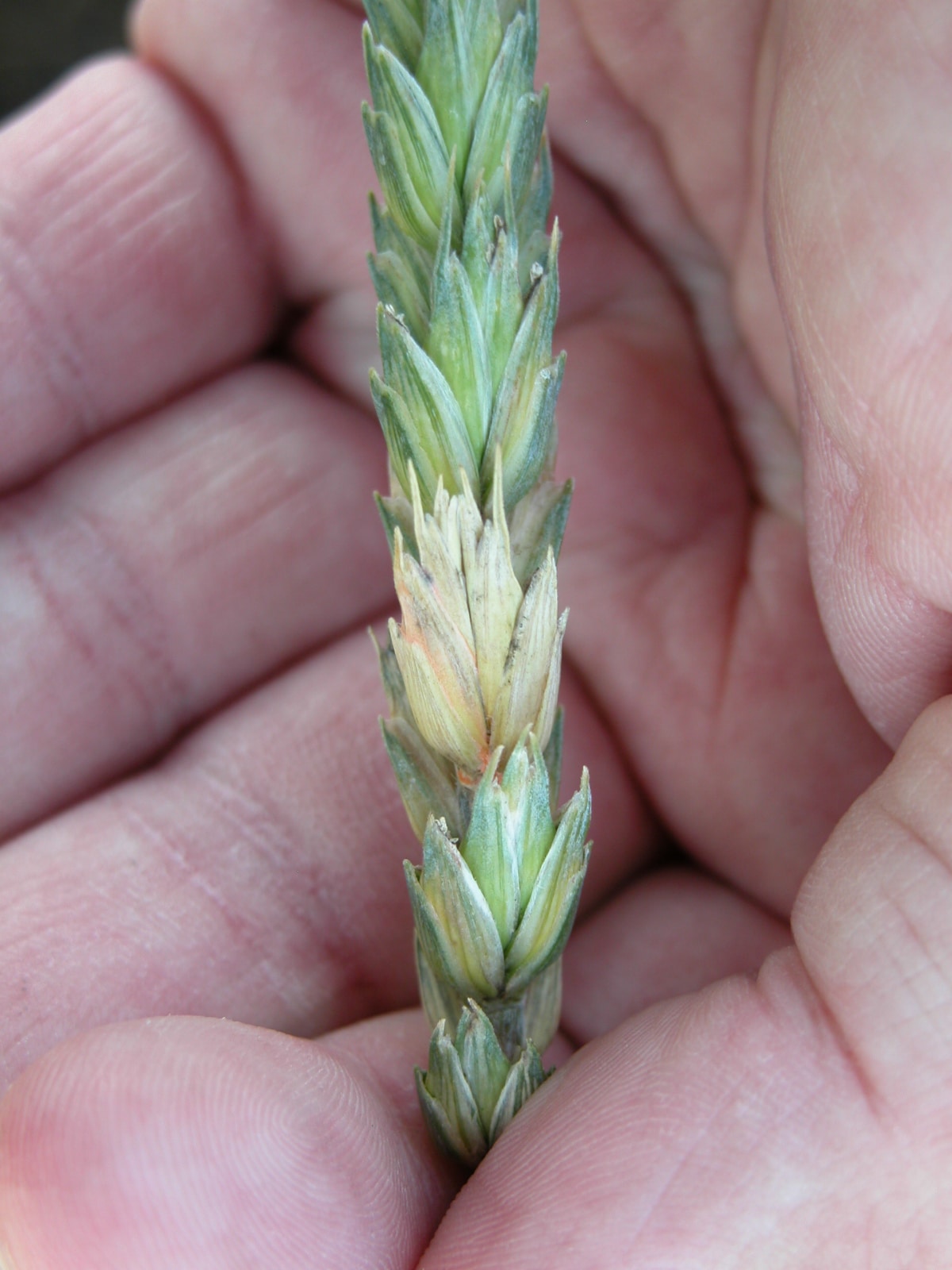Scouting for fusarium head blight (FHB) symptoms is key to realizing whether a field is a candidate for the application of a FHB plan. Neil Whatley, crop specialist at the Alberta Ag-Info Centre, explains its importance and what to look for when scouting.
Fusarium head blight is a fungal disease of cereal crops that affects kernel development. “While caused by one or more species, Fusarium graminearum is considered the most important FHB species due to its aggressiveness and production of a toxin called deoxynivalenol (DON),” says Whatley. “This mycotoxin is a fungal chemical that affects livestock feed, the baking and milling quality of wheat, and the malting and brewing qualities of malt barley. Canadian Grain Commission grading standards allow very little tolerance of Fusarium damaged kernels (FDK) in the top grades of cereals.”
Whatley says that to limit the impact of FHB, grain producers must use a combination of disease management strategies throughout the growing season. “The first step in this strategy is realizing whether the disease is present in a developing crop by searching for disease symptoms. Additionally, learning whether Fusariumgraminearum is the dominant FHB species under observation and becoming aware of its prevalence and severity contribute to this first step toward potentially reducing its negative impact.”
FHB symptoms become visible in a cereal crop during the later heading stage. While disease infection takes place a few weeks prior at the flowering stage, symptoms appear when the plant reaches the late milk to early dough stage. “For spring seeded cereals, this typically occurs during the last part of July or early August,” explains Whatley. “Once symptoms are present, it is too late to apply a fungicide, however, this information is valuable for your FHB disease management plan in subsequent growing seasons.”
The most apparent FHB disease symptom in wheat is premature bleaching of one or more infected spikelets in the cereal plant’s head, which is visibly apparent on green heads. Orange, pink or salmon coloured fungal growth may also appear at the base and edges of the glumes on these blighted head parts. Symptoms in barley are much less distinct and the brownish discolouration of FHB infected barley spikelets can easily be confused with hail damage or the extended symptoms of other barley diseases like spot blotch, i.e. kernel smudge.
“If these symptoms are observed in a field, send the suspicious looking cereal head samples to a laboratory,” notes Whatley. “Several private seed company labs offer FHB testing services and the only way to confirm whether the affected heads contain FHB infection is to have them tested by a lab. Additionally, a lab test will determine whether the Fusarium species is indeed Fusarium graminearum or one of the less damaging fusarium species.”
Infection timing determines the severity of kernel damage. Explains Whatley, “While infection occurring at early flowering can lead to complete abortion of kernels, fusarium damaged kernels generally result from infection that occurs from the early to mid-flowering stages. Later infections that occur well after flowering and up to the soft dough stage of kernel development may not show visible symptoms. However, kernels may contain the fungus, and more importantly, the mycotoxin it produces.”
For more information about scouting for FHB symptoms, contact the Alberta Ag-Info Centre at 310-FARM (3276).
Source: Alberta Agriculture and Forestry





